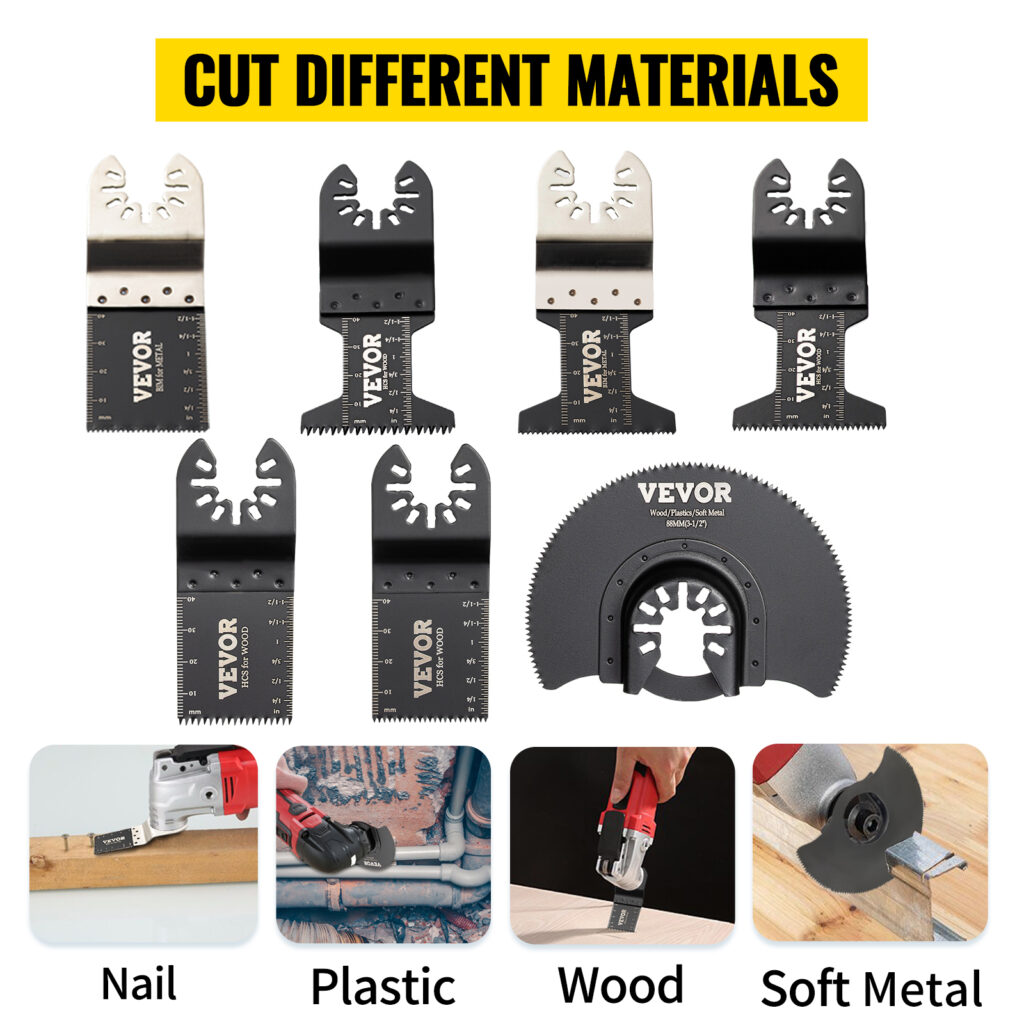Multi-tool blades are the unsung heroes in the arsenal of DIY enthusiasts, craftsmen, and professionals. These versatile attachments, designed for oscillating multi-tools, revolutionize the way various materials are cut, shaped, and refined. In this comprehensive guide, we’ll delve into the diverse types, specialized uses, and the indispensable role of multi-tool blades across different applications.
What are the diverse types and uses of Multi-Tool Blades?
Multi-tool blades come in a variety of types and designs, each suited for different tasks and materials. These blades are compatible with oscillating multi-tools and are used for cutting, scraping, sanding, and other applications. Here are some common types of multi-tool blades:
Bi-Metal Blades
Composition: Bi-metal blades consist of two metals – high-speed steel and a flexible steel body. These are fused together through a welding process.
Versatility: Known for their versatility, bi-metal blades are capable of cutting through diverse materials such as wood, metal, plastic, drywall, fiberglass, and more.
Usage: They’re ideal for general-purpose cutting where you might encounter different materials within a single project. Their durability allows for extended use across various surfaces.
Woodcutting Blades

Woodcutting blades are optimized for cutting wood and wood-based materials.
Tooth Configuration: These blades typically feature larger, coarser teeth that facilitate fast and efficient cutting through wood fibers.
Moreover, they’re used in woodworking projects, carpentry, flooring installation, and other tasks that primarily involve cutting timber or wooden materials.
Metal-Cutting Blades
Engineered specifically for cutting through various metals like steel, aluminum, copper, and more. Metal-cutting blades have finer teeth or an abrasive edge, allowing them to slice through harder materials effectively without dulling quickly.
Commonly used in metalworking, plumbing, HVAC installations, and automotive repairs where precise metal cutting is necessary.
Carbide-Tipped Blades
Carbide-tipped blades feature carbide grit or tips bonded to the cutting edge, enhancing their durability and strength. These blades excel in cutting tough materials such as tile, cement board, brick, and other masonry or abrasive materials.
Ideal for tasks involving tile installation, masonry work, or any project requiring cutting through hard surfaces.
Grout Removal Blades
These blades have a thin profile with a specialized shape tailored for precise grout removal between tiles. They’re used to eliminate old grout without damaging the surrounding tiles, making renovation or repair work more manageable.
Sanding Pads and Blades
Some multi-tool attachments include sanding pads or blades designed for sanding various surfaces. Available in different grits, they facilitate smoothing, refinishing, and surface preparation tasks across wood, metal, or other materials.
Scraper Blades
Designed for scraping applications, these blades effectively remove substances like paint, adhesive, caulk, or sealants from surfaces. In addition, they have sharp edges or flat, angled designs for efficient scraping without causing damage to the underlying surface.
Conclusion
Multi-tool blades stand as indispensable accessories, enhancing the functionality of oscillating multi-tools across a wide spectrum of tasks and materials. Their versatility, precision, and specialized designs make them indispensable assets for professionals and DIY enthusiasts alike. By choosing the right blade for the job, users can elevate their efficiency and achieve impeccable results in various projects.
Whether you’re a seasoned professional or an avid DIYer, understanding the diverse types and applications of multi-tool blades empowers you to harness the full potential of your oscillating multi-tool, making every project a seamless and successful endeavor.
